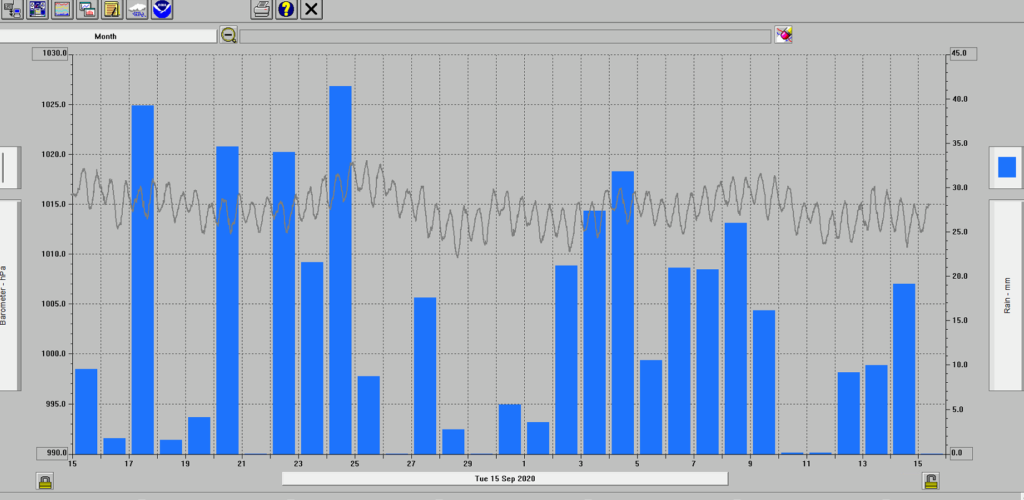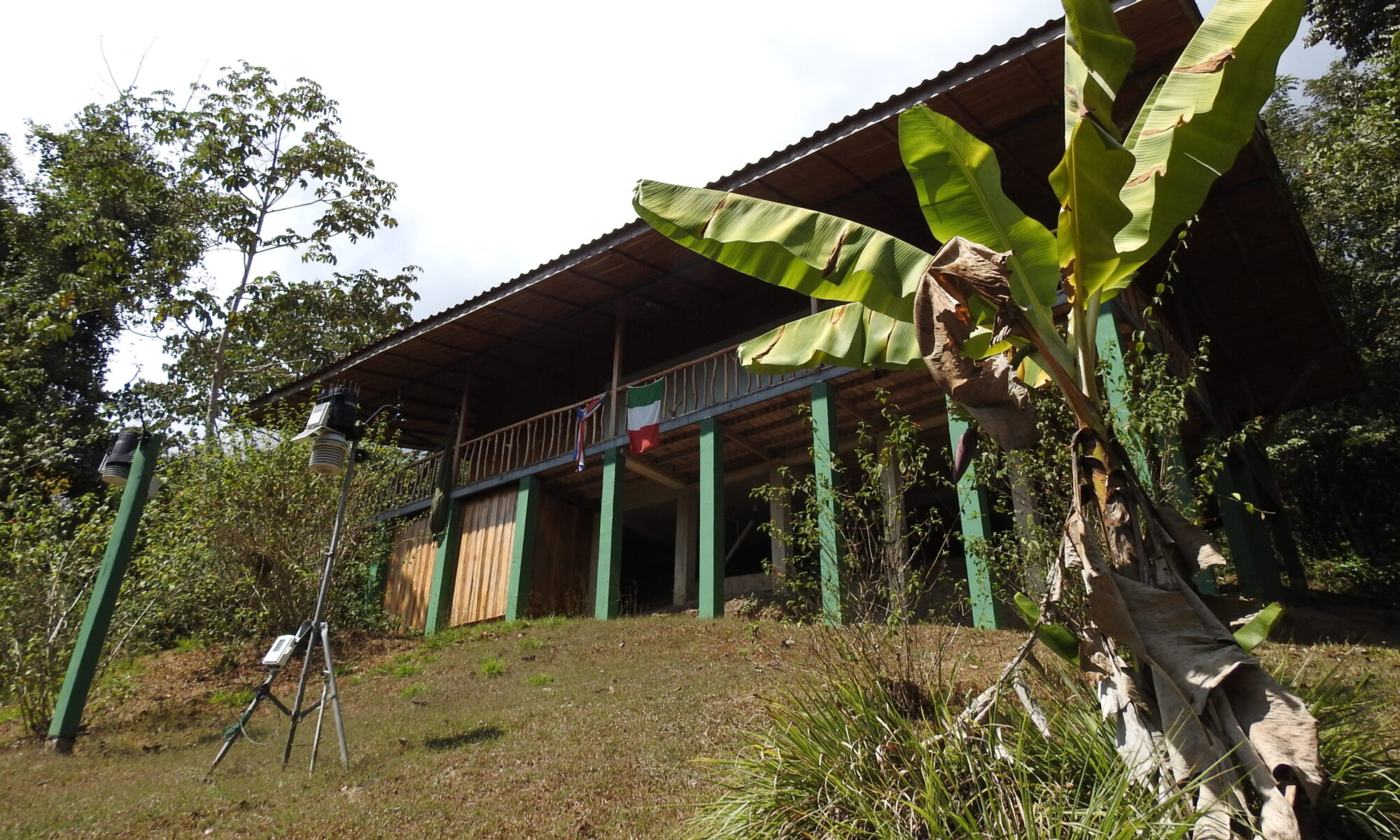It is full rainy season in Costa Rica and our weather station is providing valuable data. Thanks to the development last February with maintenance of the rain gauge, clogged with leaves and more in the dry season, and to the cleaning of the temperature and humidity sensor where hives and other insects had found hospitality, the instrumentation also thanks to the subsequent interventions of prof. Dario Sonetti, who remained at the Italia Costa Rica Station until July, and at the controls of Mr Arnulfo, now collects very interesting data.
We knew, from climatology reconstructed by reanalyses (a method for reconstructing past data based on modeling) that October is a very rainy month both in quantity, 348.8 mm on average from the reconstructions of the period 1985-2015. both for frequency of rain, in October on average 25 days out of 31 are rainy. This year the trend is in line with the climatology, as you can see in the last 31 days the rains are almost daily, consistent overall, 217.4 mm from 1 October to today, 322.6 mm in September, but typical of the season, those in September, however, slightly below the climatological average.
The more experienced in meteorology can then note how the dynamics of the tropical circulation is completely different from ours in the middle latitudes, as can be seen from the atmospheric pressure trend, which does not see significant variations in value and has no evident correlation with the presence of rainfall. the reason is in the tropical circulation, and in the dynamics of precipitation, governed not by the passage of cold and hot fronts as in the middle latitudes, with adjoining depressions alternating with anticyclones, but everything is triggered by convective processes and even more in detail by the release of heat latent in the condensation process of the air masses. Humidity in particular can be transported from the sea, by evaporation processes, but also come from the forest itself. We do not go further into the details, also because it is precisely among the purposes of our monitoring to deepen these processes and the role of the ongoing climate change on the one hand and of the forest itself on the other.

Luca Lombroso

